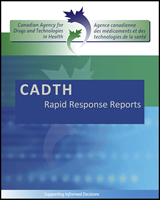Clarke et al. 2015,19
UK | SR and MA, included RCT with minimum 1 year follow-up after randomization and with sample size ≥ 5 patients.
Literature search: from inception to December 2013.
29 trials were included in the narrative review and 22 trials included in the meta-analysis. 7 of these trials used MBCT | Adults with full or partial remission from depression. Number of patients ranged from 60 to 274 in MBCT trials | Non-pharmacological intervention aimed at reducing relapse of depression. All 7 MBCT studies offered eight weekly two-hour sessions to groups of between 9 and 15 people with some variation in the number of additional sessions offered from none to monthly sessions for the trial duration | Any comparator.
TAU was used in 4 out of the 7 MBCT studies, maintenance ADM was used in 1 MBCT study, ADM/clinical management + placebo was used in 1 study, and Cognitive psychological education + TAU or TAU was used in one study | Relapse of depression measured using DSM-IV diagnosis of MDE in two studies, DSM-IV diagnosis of MDE (SCID) in two studies, 16+ on the HRSD-17 assessed twice then criteria for MD measured with SCID in one study, DSM-III-R criteria for MDE (SCID) in one study and Criteria for MDE ≥ 2 weeks (SCID) in one study.
Follow-up ranged from 52 to 86 weeks | |
Jain et al. 2015,16
US | SR included RCTs only.
Literature search was through January 2014.
18 trials were included in the systematic review. 8 of these trials used MBCT | Adult patients suffering from depressive disorder (i.e. MD, dysthymia, or both)
Number of patients ranged from 18 to 219 in MBCT trials | Meditation therapies | Not specified.
TAU was used in 4 studies out of the 8 trials, PED was used in 1 trial, ADM was used in 1 study, wait list was used in 1 study, and CBT was used in 2 studies | Reduction of depressive symptoms using
BDI-II in 3 studies, HRSD in 3 studies, BDI in one study, and general severity index of brief symptom inventory in one study. Length of follow-up was not mentioned | The review included two trials using MBCT that are common with other systematic reviews |
Churchill et al. 2013,18
UK | SR included RCTs only.
Literature search was through March 2013.
4 trials were included in the review. 1 of these trials used ACT | Adult patients with acute depression.
Number of patients included in ACT trial was 54 | ACT, compassionate mind training, functional analytic psychotherapy, dialectical behavior therapy, MBCT, extended behavioral activation and metacognitive therapy. The study that used ACT intervention offered 4 weekly sessions in a group format of 2 to 10 participants | Treatment as usual, waiting list, attention placebo, psychological placebo.
Supportive group comparison was used as comparator in the study that used ACT intervention | Number of participants who responded to treatment and number of participants who remitted. The trial with ACT intervention used BDI-II to measure continues change in depression scores | |
Strauss et al. 2014,20
UK | SR and MA of RCTs.
Literature search was through July 2013.
12 trials were included in this review, of those six trials used MBCT, 5 used MBSR, and one used PBCT intervention | Adult patients with anxiety or depressive disorder.
4 trials included patients with depression (three of these trials used MBCT, and one trial used PBCT, with number of patients ranged from 18 to 69), and one trial included 31 patients with GAD where MBSR was used | MBIs | Group CBT, group psychoeducation and inactive control conditions (TAU, wait list, aerobic exercise).
In the Depression studies group psychoeducation was used in 1 study, group CBT was used in 1 study and TAU was used in two studies | BDI-II, and HRSD | The review included two trials on depression patients that are common with other systematic reviews |
Bolognesi et al. 2014,15
UK | SR
Literature search was through September 2012.
3 studies using MBCT, 3 studies using MBSR and three studies using ABBT were included in this review | Patients with GAD.
Number of patients ranged from 11 to 46 in MBCT trials, from 18 to 76 in MBSR trials, and 16 to 31 in ABBT trials | CBT, CBT Packages, new CBT approaches, third wave CBT, Internet computer based CBT, psychodynamic therapy, brief psychodynamic therapy, AR and mindfulness | Any or none
No control group was used in two of the MBCT studies, and ADE was used in 1 study.
Waiting list was used in 1 study, no control group was used in 1 study, and education program was used in 1 study in the MBSR studies. Waiting list was used in two of the ABBT studies, and no control group used in 1 study | BAI
HAM-A
HRSD
PSWQ | |
Chiesa and Serretti 2014,17
Italy | SR
Literature search was through December 2011.
24 studies were included of which 14 were RCTs and ten were non-RCTs | adult patients receiving treatment for SUM
12 studies focused on alcohol and/or heterogeneous substance use, four on cigarette smoking, three on opiate use, one on marijuana use, and one on metamphetamine use | MBI
eight studies focused on MBSR or related MBI, five on ACT, three on 3S-therapy, two on DBT, one study focused on a Vipassana retreat, one study focused on a goal management training in adjunct to mindfulness meditation, and one study focused on a brief motivational intervention in adjunct to mindfulness meditation | either inactive (e.g., waitlist) or active (i.e., condition intended to control for non-specific effects of MBIs
10 compared MBIs to a waitlist, eight compared MBIs with an active treatment, two compared MBIs with non-specific educational interventions designed to be structurally equivalent to the MBIs | difference between MBIs and active or inactive comparators on measures of objective and subjective SUM reduction | |

